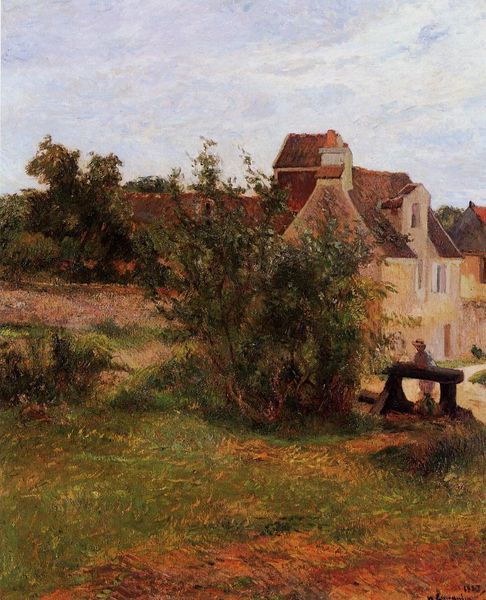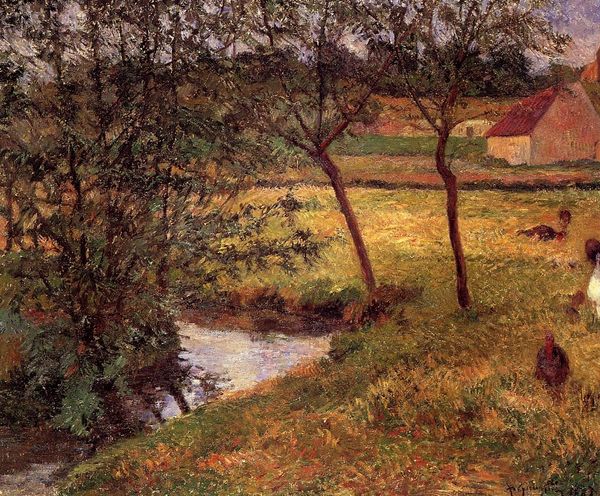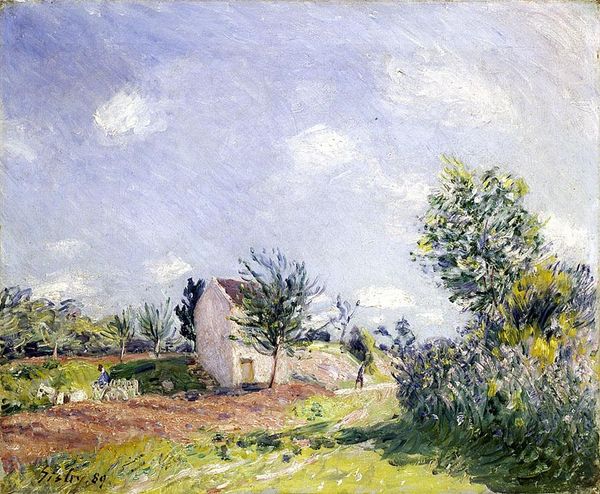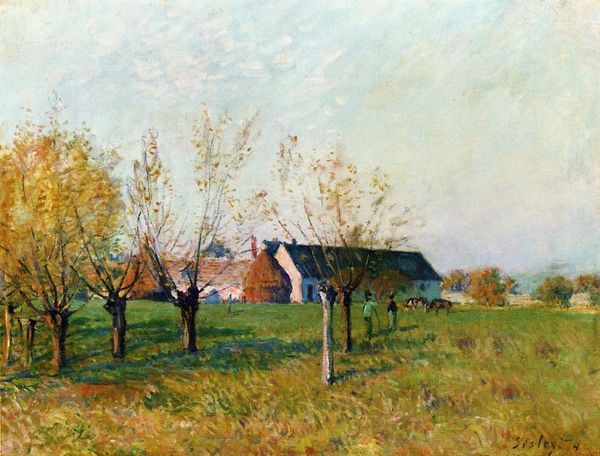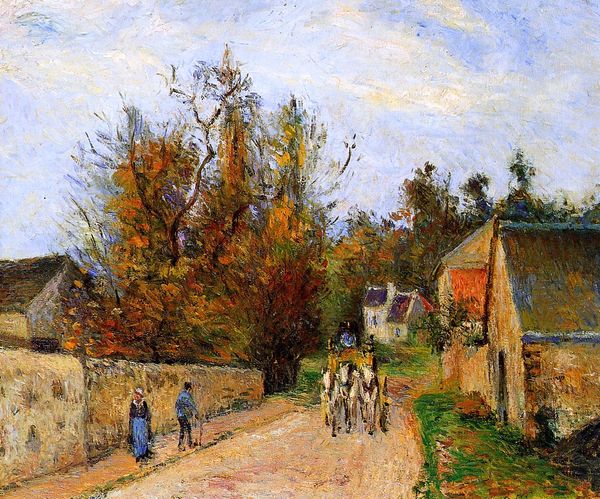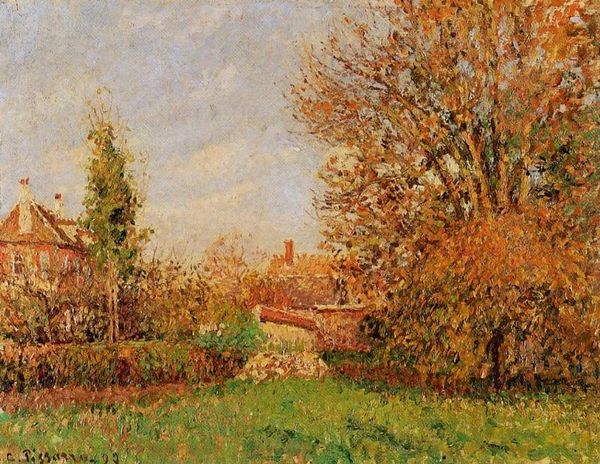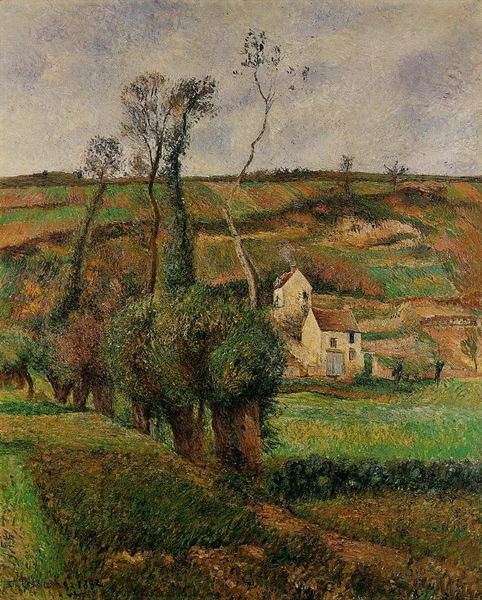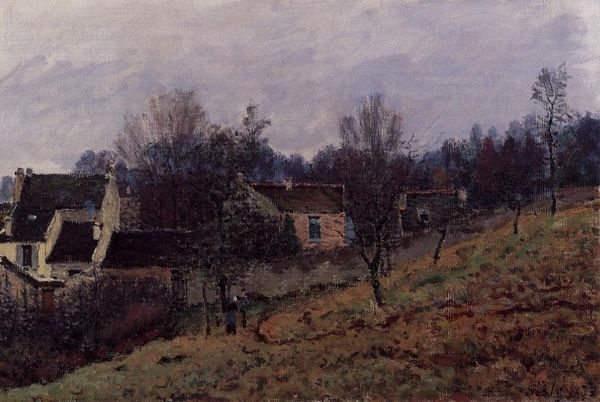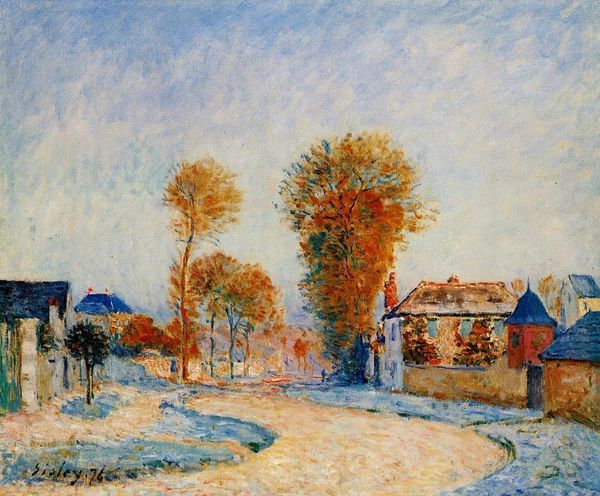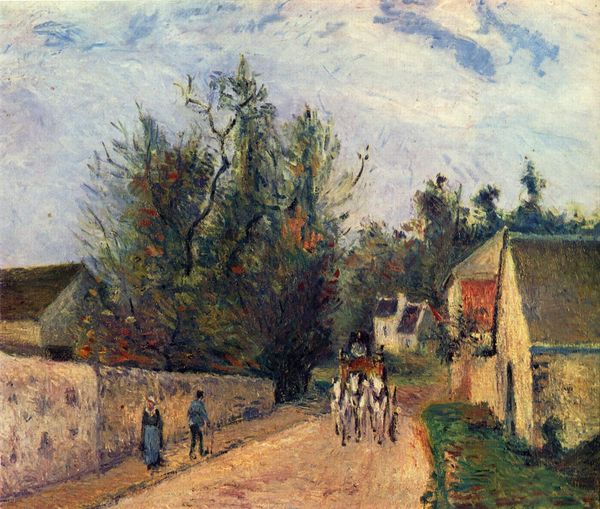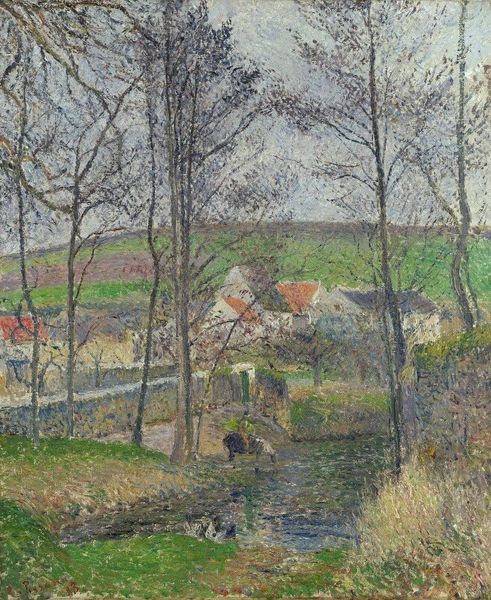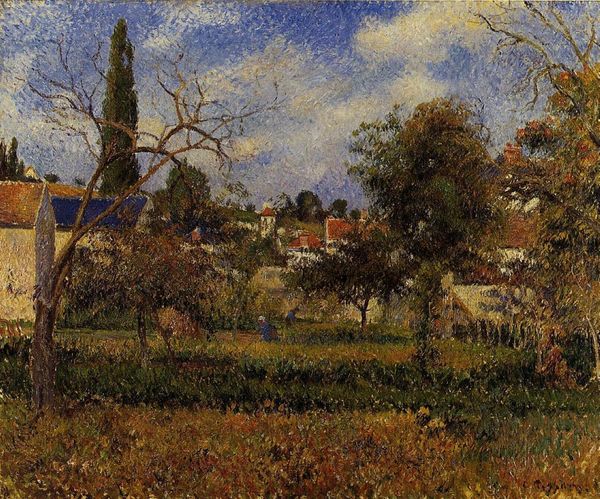
plein-air, oil-paint
#
impressionism
#
impressionist painting style
#
plein-air
#
oil-paint
#
landscape
#
impressionist landscape
#
oil painting
#
genre-painting
Copyright: Public domain
Curator: Before us is Camille Pissarro’s "Farm at Basincourt," painted in 1884. Notice how Pissarro captures the essence of rural life through his distinct impressionistic lens. Editor: It has a quiet energy, wouldn’t you agree? The way he builds form through small strokes gives a sort of woven quality. I'm also struck by how the color suggests the change of seasons; hints of summer's green give way to earth tones. I want to know more about Pissarro's painting practice and material handling in these early impressionist landscapes. Curator: Pissarro worked *en plein air,* a practice central to Impressionism, allowing him to directly capture the fleeting qualities of light and atmosphere. But let's not forget what these images also communicate culturally—the dignity and connection of human labor in the rural landscape. Note how the farm blends subtly into the environment: a sign of integration. Editor: Absolutely, and this integration speaks to the changing agricultural practices. What seeds are being planted in these fields? How does that effect food and economy in Basincourt? I think looking closely at brushwork is key— those strokes build up the earth, each one its own discrete unit but contributing to the collective surface of the painting. This landscape itself seems to be in flux because of how quickly the Impressionist movement advanced art-making practices and pictorial subject matter. Curator: Indeed. One also sees a tension present throughout Impressionism. The emerging visual language and color palette is rooted in symbolic and aesthetic precedents that go far deeper than a quest for representing atmospheric and optical conditions in nature, doesn't it? We may be drawn to it, and even understand that it presents an 'objective' likeness to life as lived and observed. Yet the fact that this painting persists underscores the need for more meaningful interpretations of what landscape paintings like Pissarro's continue to signify within a rapidly industrializing society. Editor: Pissarro also likely employed new pigment mixtures to generate those striking juxtapositions of cool and warm hues that define this historical time in art history. These elements have become accessible due to industrial developments during that era which influence production processes as well cultural expression too. It prompts the inquiry if these visual styles impacted perspectives towards manufacturing. I would ask this too. What kind influence on artistic movements in that society Curator: This glimpse into the heart of French Impressionism reveals Pissarro’s subtle artistry while reflecting upon human harmony through representations as observed nature, providing timeless appreciation when observed in paintings. Editor: Looking close reminds our modern audiences about how processes have had impact during artistic creativity as seen by material studies conducted for its development which further influences our interpretations surrounding art production approaches nowadays.
Comments
No comments
Be the first to comment and join the conversation on the ultimate creative platform.

